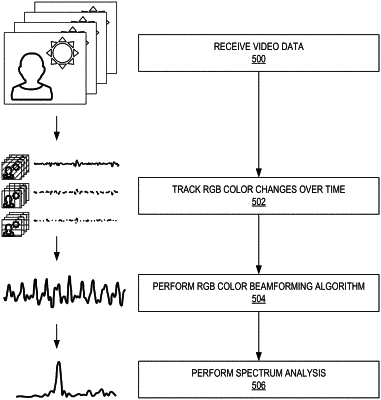| CPC A61B 5/7282 (2013.01) [A61B 5/0075 (2013.01); A61B 5/0816 (2013.01); A61B 5/1176 (2013.01); A61B 5/444 (2013.01); A61B 5/6887 (2013.01); G06T 7/0012 (2013.01); A61B 5/02427 (2013.01); B64U 10/00 (2023.01)] | 18 Claims |

|
1. A method for remotely monitoring a physiological parameter, the method comprising:
sensing optical video data of a subject;
analyzing the optical video data to track color changes in a region of interest of the subject over a period of time;
identifying the region of interest on skin of the subject;
tracking movement of the region of interest across multiple frames of the optical video data; and
extracting physiological parameter data of the subject by adaptively beamforming the color changes.
|